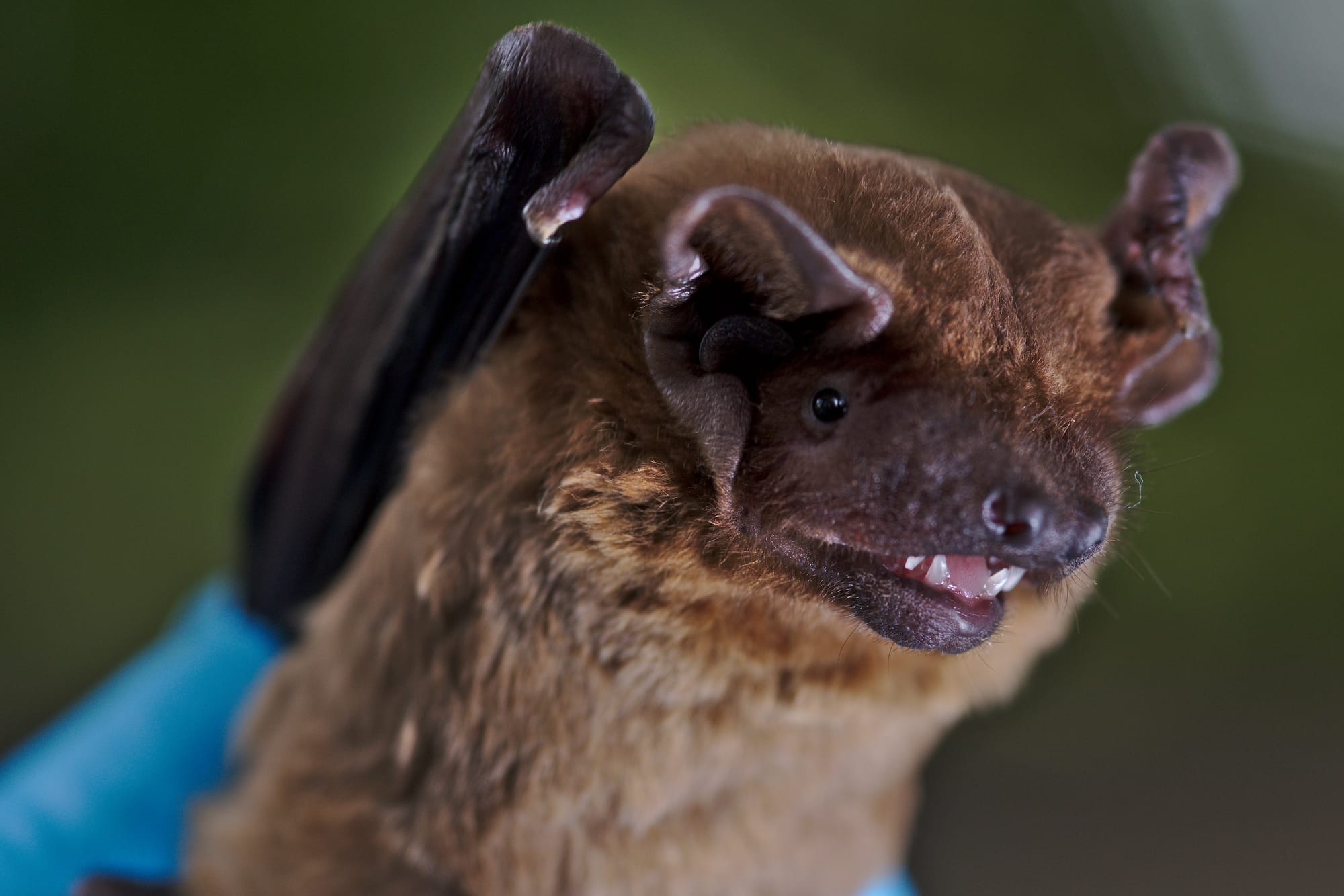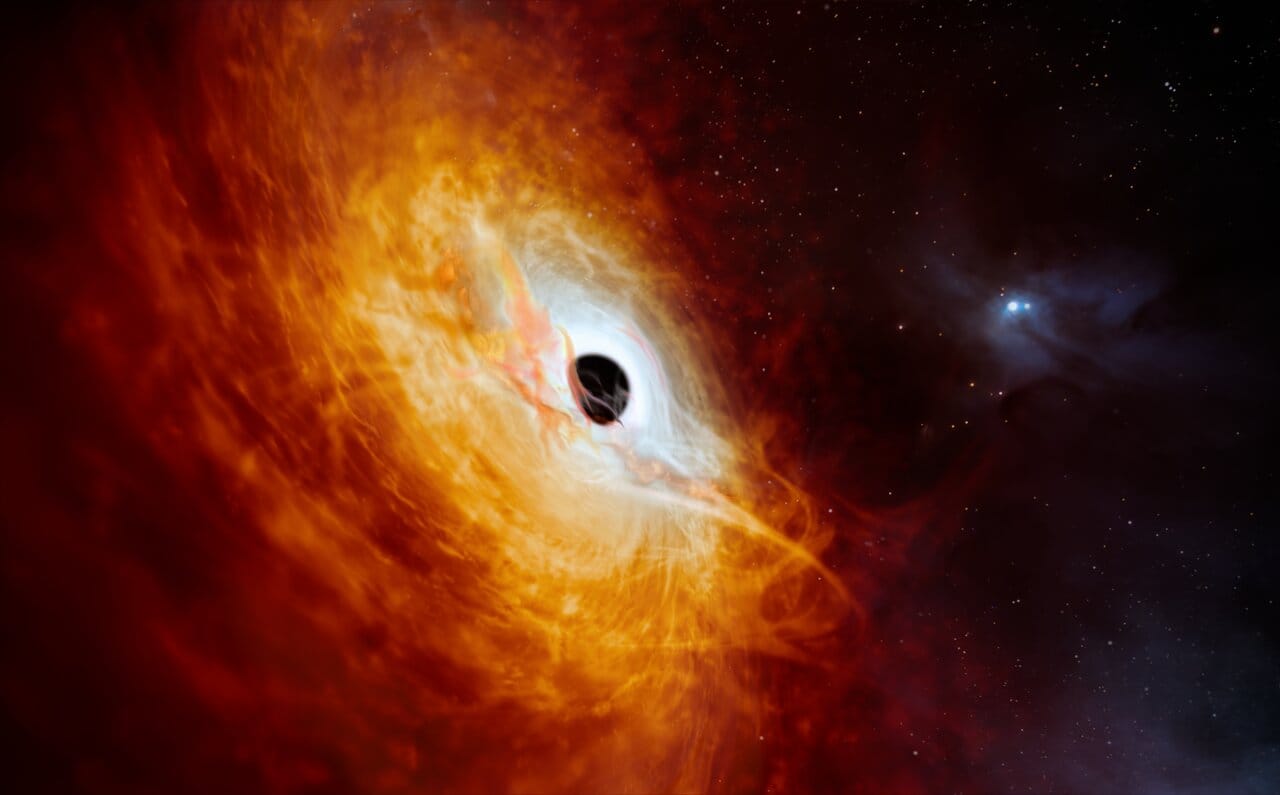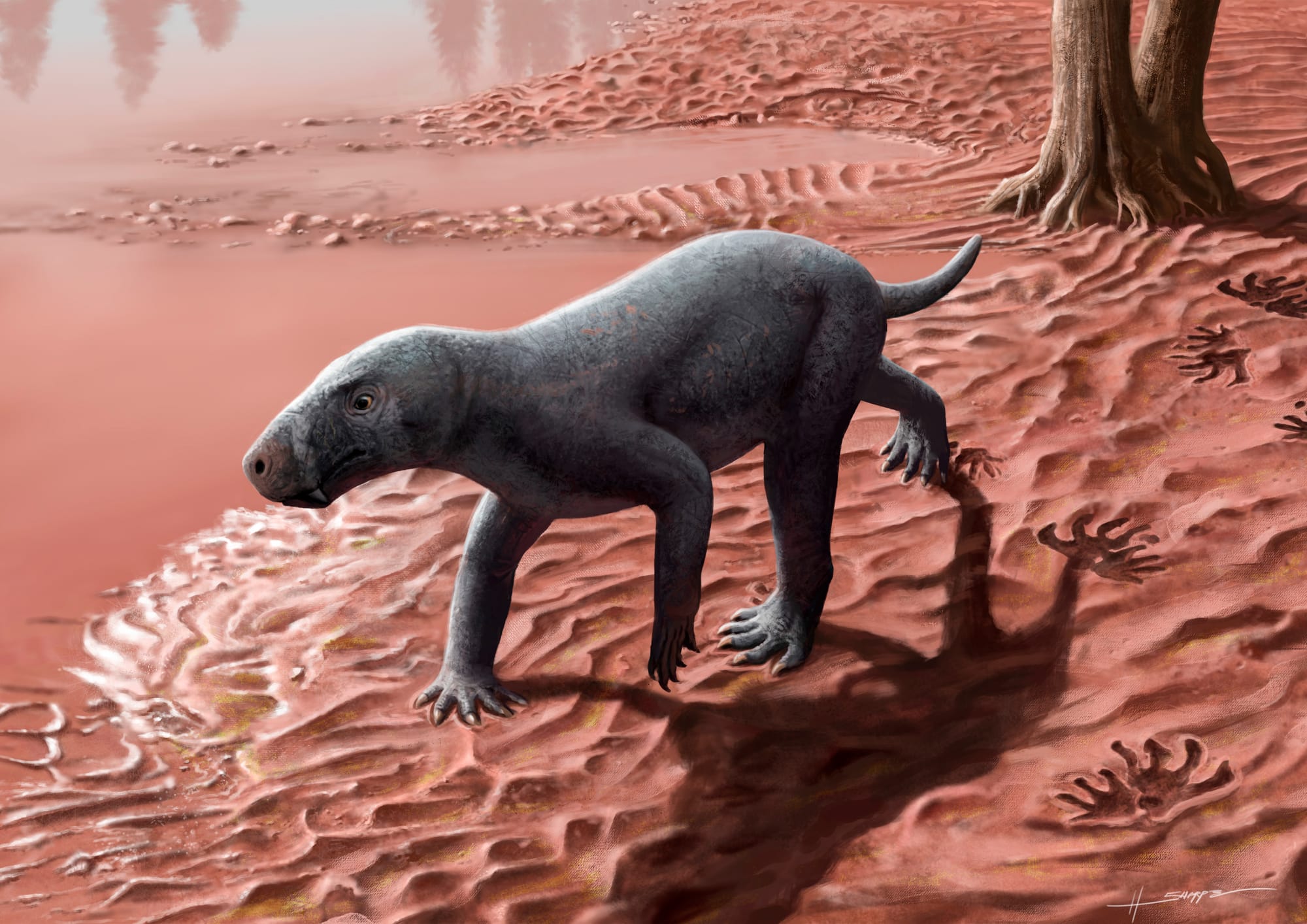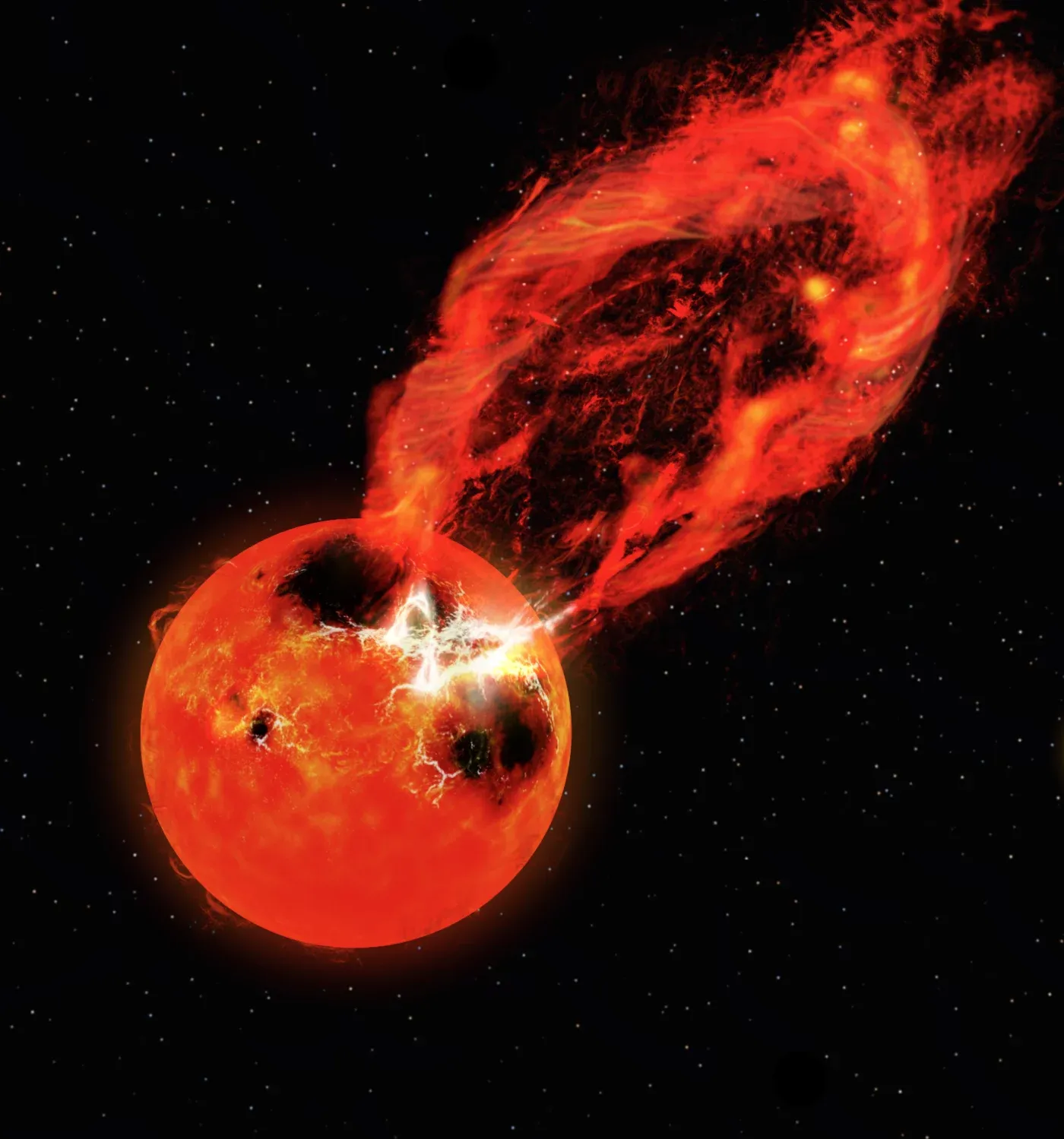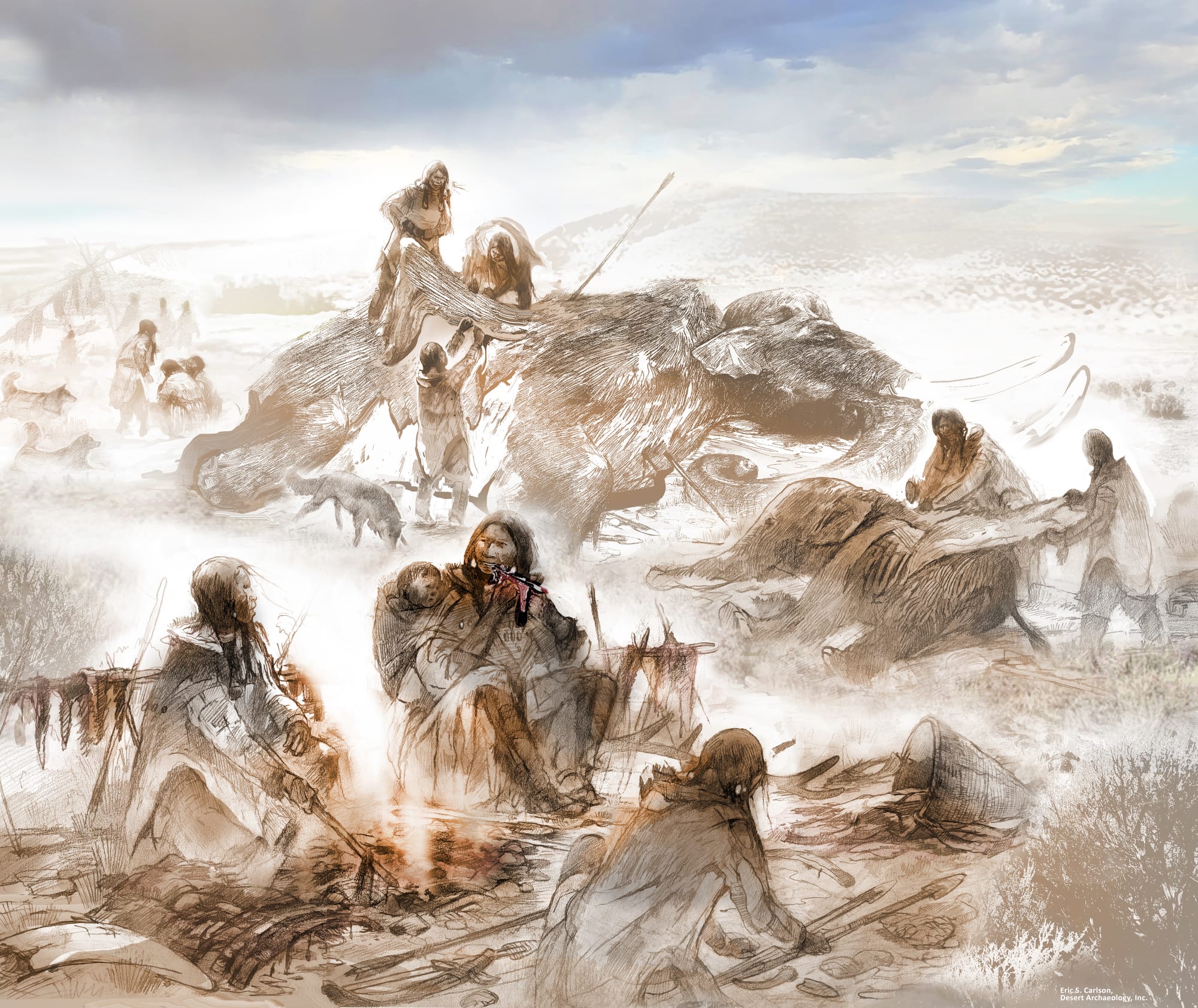If Planet X Exists, It’s Running Out of Places to Hide

Welcome back to the Abstract!
This week, it’s time to demand a new planet. Don’t we deserve it? Haven’t we been good? Fortunately, we may be on the cusp of finally discovering whether the solar system has, indeed, been hiding a massive world up its sleeve. Can you imagine the fight over naming this world, if it actually is discovered? I’m already exhausted. Let’s just skip the fuss and call it Becky.
Then, we’ll hang around the outer system for a while to check in on Pluto and Charon. How did they meet? Violently, it turns out! Next, scientists confirm that saber teeth are extremely efficient at converting living things into dead things. Last, meet Punk and Emo, founding members of the mollusc underground. It’s a week of deep space and deep time; enjoy the ride.
All I Want for Christmas 2025 is A GIANT PLANET
Siraj, Amir et al. “Orbit of a Possible Planet X.” The Astrophysical Journal.
For nearly a decade, scientists have speculated that an undiscovered giant planet lurks in the distant reaches of the solar system. The existence of this unconfirmed “Planet X” or “Planet Nine” could explain strange observations of objects far beyond Neptune, known as trans-Neptunian objects (TNOs).
These TNOs appear to be being gravitationally influenced by some unknown entity, though there is a lot of debate about the origin of the anomalies—or whether they are “real” at all. Planet X is one popular hypothesis, but scientists have also speculated that the anomalies could point to an expansive disk of smaller objects, or even a primordial black hole. The effects may also just be a temporary coincidence that does not require the invocation of some hidden hulking entity.
To help constrain these possibilities, scientists have presented new predictions about Planet X, assuming it exists, in part by expanding the sample of TNOs from 11 objects to 51. The results suggest that a hypothetical Planet X would be about 4.4 times as massive as Earth, and occupy an orbit about 300 times farther from the Sun than Earth..
Most importantly, the study’s projected orbit places Planet X right into the sights of Vera C. Rubin Observatory’s Legacy Survey of Space and Time (LSST), a major new astronomical facility in Chile. LSST is expected to begin operating later this year, and it will be especially adept at illuminating the “here be space dragons” parts of our solar system map.
“Nearly all of the parameter space for the unseen planet proposed here falls within LSST’s field of view and detection limits, so if such a planet exists, it is likely to be discovered early on in the survey,” said researchers led by Amir Siraj of Princeton University. “LSST will simultaneously reveal whether the observed clustering of distant TNOs…is real, an observational selection effect, or a statistical fluke, given the large number of expected TNO discoveries.”
In other words, we may genuinely be on the cusp of adding a new planet to our solar family—or, perhaps, learning that Planet X was just an astronomical mirage. LSST is poised to answer the riddle, one way or another.
In addition to the exciting prospect, the new study offers other tantalizing predictions. The team found that the planet’s projected orbit is probably aligned with the plane of the solar system, a result that contrasts with past studies that predicted the planet would orbit at an angle. The angle of the orbit has implications for the origins of the planet; a world aligned to the plane of the solar system is more likely to be a homegrown member of our solar family, whereas a planet with a more inclined orbit could have been gravitationally captured by the Sun after making an interstellar journey from its native star system.
Look, we’re living through an overwhelming time of climate disasters, political strife, and obscene inequities. I really think we deserve a new planet, as a treat. I’ll even take a primordial black hole, if that’s what’s on offer. Given that LSST is not set to start running until the back-end of 2025, it will probably be at least a year before the existence of a planet is confirmed or refuted. But if anyone starts a betting market on this long-sought mystery, put me down for Planet X.
‘Kiss-and-Capture’: The Pluto-Charon Story
Denton, C. Adeene et al. “Capture of an ancient Charon around Pluto.” Nature Geoscience.
Speaking of TNOs, let’s talk about the most famous of them all: Pluto. This farflung world was the OG Planet Nine before it was officially downgraded to a dwarf planet in 2006, a decision that ignited an astronomical culture war. But though Pluto and its moon Charon aren’t big enough to count as planets, they are giants for TNOs; indeed, the Pluto-Charon system is the largest binary in the known TNO population. (Pluto is about two thirds the size of Earth’s Moon, and Charon is about half the size of Pluto.)
Scientists have long suspected that the system formed in the wake of a collision between two icy bodies billions of years ago, but the dynamics behind this event have defied easy explanation.
Now, scientists have developed a new formation model for this system that they call the “kiss-and-capture” regime. In this scenario, the two parent bodies of Pluto-Charon collided and then kind of just merged together for about 10 to 15 hours, before separating into the distinct bodies we see today.
“Kiss-and-capture leaves the bodies mostly intact; however, it does result in the resurfacing of Charon and a large portion of Pluto,” said researchers led by Adeene Denton of the University of Arizona. The scenario provides “a new foundation for the accumulation of geological features observed today, including Charon’s widespread fracture network and Pluto’s ancient ridge–trough system, which reflects early and widespread extension.”
Call me old-fashioned, but I prefer when kisses keep the bodies mostly intact. Given that Pluto has a giant heart-shaped region on its surface, this binary is really shaping up to be the most romantically coded system in the solar system.
Brushing Up on Saber Teeth
You don’t need anyone to tell you that saber teeth are rad. They are deadly weapons that grow out of skulls. The allure is self-evident. But just in case you wanted empirical proof to back it up, scientists have now demonstrated that “extreme saber teeth” are functionally optimal for killing bites, which explains why they have independently evolved at least five times in mammals and mammal ancestors (including gorgonopsians).
To assess the advantages of saber teeth versus other canine morphologies, researchers examined 95 teeth from carnivorous mammals, including 25 from saber-toothed animals like Smilodon, Homotherium, and Thylacosmilus. The team concluded that saber teeth “optimize puncture performance at the expense of breakage resistance,” meaning that these dental daggers evolved to deliver swift death.
Predatory scenarios for saber-toothed animals “favor a killing bite through penetration causing tissue damage and blood loss over the suffocation through clamp-and-hold bite of conical-toothed pantherine felids,” such as snow leopards, said researchers led by Tahlia Pollock of the University of Bristol.
The most recent saber-toothed cat, Smilodon, went extinct only 10,000 years ago, so our ancestors would have encountered it. In fact, saber-toothed cats may have occasionally preyed on humans. But those iconic canines are no longer spilling blood and severing arteries out there in the wild anywhere, suggesting that “the niche(s) they once occupied do not exist in the modern context,” according to the study.
It’s bittersweet to live in an era devoid of saber teeth. While I wouldn’t want to see these fatal fangs up close, the world is undoubtedly duller without them.
Punk is Dead! Like…Really, Really Dead
A nice bonus of discovering a new species is that you typically get to name it. Scientists have been having fun with this responsibility for decades, which is why we have spiders called Hotwheels sisyphus, fungus called Spongiforma squarepantsii, and wasps called Aha ha.
Now, scientists have continued this tradition with two new mollusc species identified from fossils that date back 430 million years ago. Everyone, meet Punk (Punk ferox) and (Emo vorticaudum).
Punk is named for the “fancied resemblance of the spicule array to the spiked hairstyles associated with the punk rock movement” paired with ferox (Latin) meaning “wild, bold, defiant,” said researchers led by Mark Sutton of Imperial College London.
Emo is named “after the emo musical genre related to punk rock, whose exponents canonically bear long ‘bangs’ or fringes” which is reminiscent of the fossilized mollusc’s exoskeleton, the team added. In addition, Emo’s “anterior valves” resemble “studded clothing.”
There you have it: mohawks, devilocks, studs, and other punk culture mainstays were pioneered by rabble-rousing molluscs all the way back in the Silurian period, long before animals ever walked—let alone crowd-surfed—on land.
Now all we need is to discover a new species of screeching weasel to really round out the punk biological kingdom.
Thanks for reading! See you next week.
